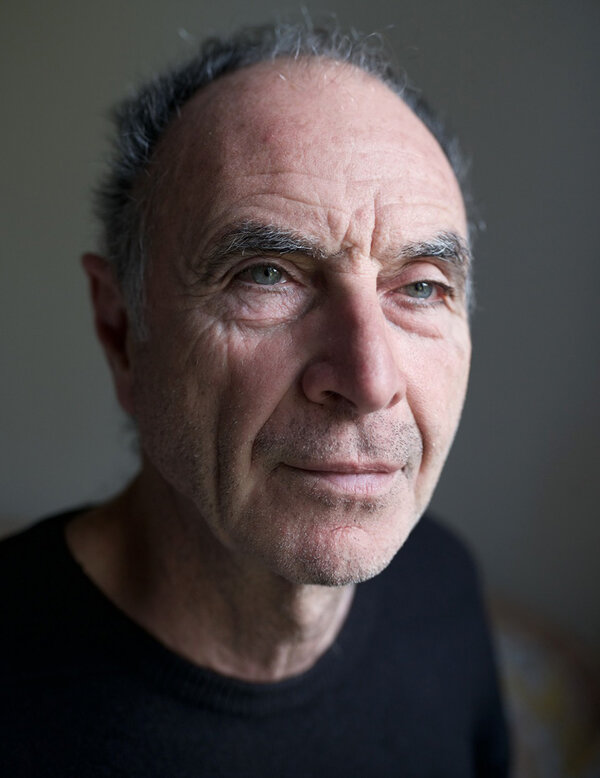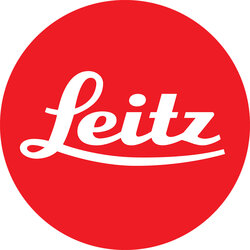Yves Angelo, enthusiastically indifferent
By Ariane Damain Vergallo for Ernst Leitz WetzlarHe went to it at least three times a week : on Tuesdays for the Film Club, hosted by a passionate philosophy teacher ; on Fridays for the Cultural Alliance screening ; and on Sunday with his entire family. Never tired of watching films, the teenager literally devoured dozens, hundreds of movies.
His father, Isi Angelo, was a dentist. Although Bulgarian-born, he had distant Venetian ancestors, hence his name, Angelo - "angel" in Italian. Akin, no doubt, to those that were to keep a close eye on his son Yves.
As luck would have it, Isi Angelo had found a temp job covering for a Meknes dentist. When the man died in a car accident, Isi Angelo took over his practice and settled down in that small town, then under French protectorate.
Although he was born and grew up in Morocco, Yves Angelo retained very little from his childhood. Neither Arabic, a language he never learned, nor the sun, nor the colors, nor the smells. Those memories, however, came back unexpectedly, a few years later, when he visited an exhibition of Eugène Delacroix’s watercolors, painted in North Africa.
For at the time, Yves Angelo had his eyes fixed on France. To this day, he is almost addicted to northern mists and the cloudy skies.
"I don’t like glaringly bright colors, I prefer the grayness of the sky to the harsh sunlight".
In Morocco, young Yves is like a visitor in foreign land, just passing through. So when he arrives in Paris, having - at 17 - passed the entrance exam at the Louis-Lumière Film School, he finally feels at home.

Not only do his professional debuts happen at the speed of lightning, they are spectacular.
Right after graduating from the Louis-Lumière Film School, Yves Angelo becomes second assistant camera on Sydney Pollack’s Bobby Deerfield (lit by cinematographer Henri Decaë). Three years later, he is first assistant cameraman on a film directed by Jeanne Moreau, L’Adolescente (The Adolescent, 1979). Five years after that, he is listed as "second camera operator" on Bertrand Tavernier’s Round Midnight (1986).
"Second camera operator" is an ideal position for a rookie cameraman, for that camera knows no constraints : it does whatever it wants, and if the result is there, it reaps the most praise. That first try turns out to be a master stroke, as Yves Angelo quickly becomes a much sought-after camera operator. But his true passion is music. He has toured throughout the world with major pianists, particularly Claudio Arrau and Sviatoslav Richter. To this day, he is known for hopping on board a plane to New York or Hamburg just to listen to them play for an evening.
In 1987, Bruno Nuytten is a renowned cinematographer who has lit most of the great films of the past two decades. Switching to directing, he embarks on a most ambitious first feature, Camille Claudel, starring national icon Isabelle Adjani as the artist, muse and secret lover of famous sculptor Auguste Rodin (to be played by another star, Gérard Depardieu). Needless to say, this film is eagerly awaited.
Instant turmoil occurs when it comes to ’casting’ the film crew. Isabelle Adjani rejects the cinematographer initially chosen by Nuytten and, following dizzying reshuffle, cinematographer Pierre Lhomme finally comes on board... two weeks before shooting is to start. Of the two camera operators Lhomme suggests, director Nuytten instinctively chooses the younger and lesser known : Yves Angelo.
"It was crazy. I wasn’t even 30, and this was a huge movie".
At the end of every shooting day, the film crew would gather near the Champs-Elysees to watch dailies. Always a tricky moment for those who see their previous day’s work unveiled in front of all. For better or, some fear, for worse.
On the hundredth shooting day, Isabelle Adjani is scheduled to play an important scene where Camille Claudel, devastated by madness and alcohol, meets a journalist. To prepare for it, Adjani stays up all night, plays the scene at a feverish pitch - and pulls it off with the talent we all know.
The following day, a mere fifteen seconds into dailies screening, she stands up in a rage, curses Pierre Lhomme - "How dare you do this to me ?!" - and like a fury, leaves the room.
Ah, the unfathomable mystery of top-level actresses : she found herself way too pretty !
Bruised, hurt, but trying to understand what happened, Pierre Lhomme decides to print photograms from the negative of the scene. Much to his amazement, he realizes that when Adjani speaks, she is animated by a flame that vanishes when she listens. Relaxing, as it were, she loses her luster and becomes closer to the crazy, alcoholic character she has to play. Pierre Lhomme’s lighting is not responsible for that strange phenomenon.
That episode will mark Yves Angelo forever. Later, when he becomes a director, he will religiously abide by one principle : "Approach things globally, without privileging either the scenery or the light, but observe the scene from the actors’ point of view".
After Camille Claudel’s huge success, Yves Angelo turns down all offers as camera operator and decides to risk it all by shooting his first film as cinematographer. His ’debut’ feature will be Jérôme Boivin’s Baxter (1989).
Shot immediatly afterwards, Alain Corneau’s Nocturne indien brings Angelo his first César (French Oscar) for Best Cinematography.
Less than two years later, he gets a second César for yet another film by Alain Corneau, Tous les matins du monde. Things speed up, offers pour in. Corneau’s film meeting with great success in the United States, US agents suggest Angelo come to work Stateside. He turns them all down : too attached to his life in France and to European culture.
Not to mention an overload of work there : he gets offered an average of one feature film a week.
After completing Claude Berri’s Germinal, he decides to take a year off to think - pausing only to pick up his third César for Best Cinematography.
Three Césars in five years, that is unprecedented !
And all the more extraordinary as the man readily admits : "I am not particularly passionate about cinema. I am more into literature, music and painting. I have always been rather indifferent to success and/or failure".
The next stage, now ? Directing. Producer Jean-Louis Livi once told him : "If you ever wish to make a film, come to me first." The result : Colonel Chabert (1992), based on Honoré de Balzac’s novel, which star Gérard Depardieu personally asks him to direct. In the twenty-some years that follow, Angelo will direct six feature films and four documentaries.
For his third film as a director - Voleur de vie (Stolen Life, 1998), starring Emmanuelle Béart and Sandrine Bonnaire - Yves Angelo calls upon cinematographer Pierre Lhomme to light what he considers his most beautiful film.
"It was a weird and wonderful situation, because, in my younger days, I had been his assistant then his camera operator. What he did on Voleur de vie was deeply coherent. The themes of the film were subtly encased in light, with elegance and refinement, without ever clamoring for attention".
As Angelo is one of the first filmmakers to be interested in digital technology, his longtime accomplices, directors Alain Corneau and François Dupeyron, call him back to work as a cinematographer. Since then, he has alternated between the two functions, championing a body of work that focuses mainly on natural light.
In the mid-1950s, his father, Isi Angelo, had bought a Leica M3 still camera with a Summicron 50mm lens. Hundreds of photos had been taken in Morocco. Then the camera passed on to his son, in France, and Yves Angelo used it on most of his sets. It now begins a new life (its third) in the hands of Yves’ daughter Julie who plans to become a cinematographer herself. She commutes between the United States and Europe, and continues to take silver halide photographs with her grandfather’s Leica M3.
Thinking back about that object his family used on three continents over nearly seventy years, suddenly, an idea crosses Angelo’s mind :
"You learn about light as you go along and my eye was trained by Leica. Almost in spite of myself, I was educated by my father’s Summicron 50mm lens".
And so, when Agnès Jaoui asks him to light her next film, Place publique, Yves Angelo is delighted to be the first to use Leica’s new large format lenses, the Thalia series.
"With these lenses, I find the same emotion I felt when I started out in photography, the clear definition and the softness - and the skin textures are beautifully rendered."
Yves Angelo boldly compares that experience with John-Sebastian Bach whose music he has played daily on the piano for years.
True, Bach was born in Eisenbach, Germany, about sixty miles from Wetzlar, where Leica always had its headquarters. Could Angelo assume there is special connection there ?
Even Leica would not have thought of that !
But then one understands his apparent detachment vis-à-vis his life as a filmmaker comes only from an infinite diversity of things he is enthusiastic about.
(Translated from French by Henri Béhar)
 En
En Fr
Fr






